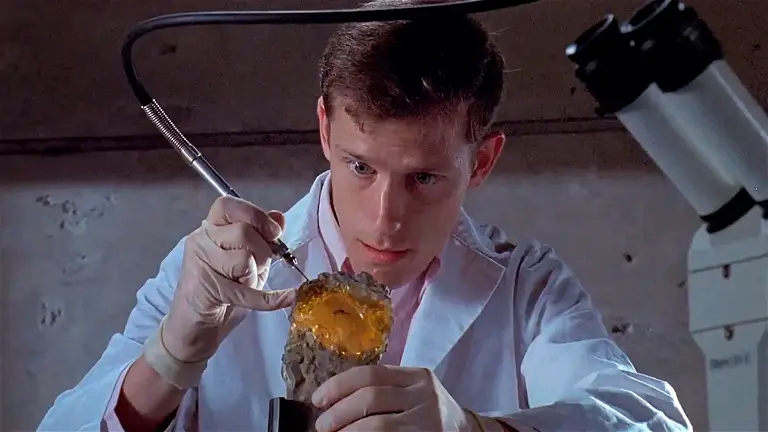- The graphene brain implant that could help Parkinson’s patients
- There could be an extraterrestrial civilization on our planet. At least that’s what some Harvard scientists think

In 1990, Michael Crichton fantasized about creating a place where dinosaurs could come back to life. The genius of science fiction gave birth to a unique work that quickly evolved to have one of the highest-grossing blockbusters of all time and that also raised him as an intrinsic part of the popular culture of the time. Book and film were a gem, both in their own format. Now, a team of scientists from the Massachusetts Institute of Technology (MIT) have developed an amber-like polymer in which they have been able to store human DNA strands. Something that is a real twist in what we knew about genetic and molecular science so far and that becomes a quite remarkable milestone that reminds us of this science fiction film with dinosaurs.
DNA in amber polymers
A team of researchers at MIT has developed a very surprising technique for storing DNA at room temperature, overcoming all the problems currently faced by current methods that require freezing. This breakthrough, inspired in part by the film “Jurassic Park,” could transform the way we preserve genetic and digital information. It has been published in the Journal of the American Chemical Society very recently and it represents a very interesting change in the way things are done now.
The new method, called T-REX (Thermoset-REinforced Xeropreservation in English, and a clear acronym that refers to its main inspiration), uses a polymer similar to amber to encapsulate and protect DNA. This material, composed mainly of styrene and a crosslinker, forms a thermoset solid when heated. The key to its effectiveness lies precisely in its hydrophobic nature, which prevents moisture from damaging the stored DNA, making it a very safe way to encapsulate this issue for years. To get the naturally hydrophilic DNA to integrate into the hydrophobic polymer, the researchers designed a specific combination of monomers. These form spherical complexes with the DNA, allowing it to be incorporated into the polymer.
The storage process takes a few hours, but scientists believe there is room for improvement that could reduce this time. To recover the DNA, a compound called cysteamine is used to degrade the polymer, followed by a detergent that releases the DNA without damaging it. This is also very important, because it is not only about storing the information but also about retrieving it.
The team managed to store everything from short sequences of DNA to complete human genomes. As a creative demonstration, they even encoded the music from the original “Jurassic Park” soundtrack into DNA and successfully stored it. This shows that it is a very versatile practice with an incredible number of possibilities. Therefore, it is a very exciting step forward both for its creators and for science in general. In addition, it can survive up to temperatures of 75 degrees Celsius, so it can be stored in any environment. Until now, temperatures had to be around absolute zero or even below it to allow them to be preserved.
Now, a company called Caché DNA, which belongs to MIT, is working on commercializing this technology to make it even more usable for a myriad of purposes. In the end, this technology makes it possible to synthesize the best of information technologies and genetics. This, together with changes in gene editing that even make it possible to cure deafness, is vital for the development of one of the sciences that have evolved the most in recent years.

Comments